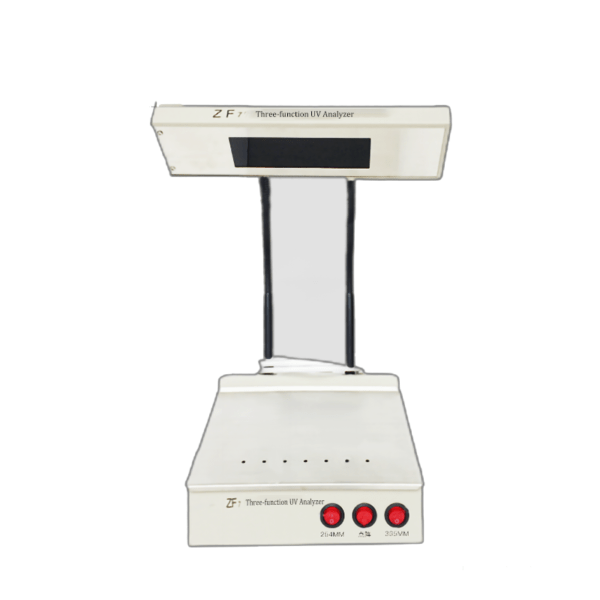Ultraviolet (UV) analyzers have become essential tools in various scientific and industrial fields, from chemical analysis to environmental monitoring and biological research. The principle of UV analyzer is based on the unique interaction between UV light and the molecular structure of substances. By understanding how UV light is absorbed by different compounds, we can leverage UV analyzers to measure concentration, identify components, and analyze a wide range of materials with precision.

Understanding UV Light Absorption
The core principle of a UV analyzer relies on the absorption of UV light by molecules. Different substances absorb UV light at specific wavelengths, and this absorption is unique to each compound. When UV light passes through a sample, the molecules absorb the light and undergo electronic transitions, causing a change in absorbance. This change is measured and analyzed by the UV analyzer to determine various characteristics of the sample, including concentration and molecular structure.
For example, in pharmaceutical research, the principle of UV analyzer allows researchers to measure the concentration of active pharmaceutical ingredients (APIs) in a drug formulation, ensuring that the product meets required specifications. Similarly, in environmental monitoring, UV light can be used to detect pollutants, such as organic compounds or heavy metals, in water samples. These applications highlight the importance of UV analyzers in both laboratory research and real-world monitoring.
Types of UV Analyzers and Their Versatile Applications
UV analyzers come in different forms, each suited to specific applications. Common types include benchtop models, which offer flexibility with multiple detection modes, allowing for both qualitative and quantitative analysis of liquid, gas, and solid samples. The principle of UV analyzer technology is adaptable to various industries, including pharmaceuticals, food safety, and environmental monitoring.
In chemical analysis, UV analyzers are used to study reaction kinetics, measure concentrations of solutes, or identify unknown compounds. For instance, UV analyzers are commonly used in laboratories to determine the concentration of organic compounds in water or measure the rate of a chemical reaction. Their precision and speed make them indispensable tools in both academic and industrial research.

Case Study: UV Analyzers in Pharmaceutical Research
Consider a scenario in a pharmaceutical research lab. Scientists are working on the development of a new drug, and they need to ensure that the active ingredients are present at the correct concentration. The principle of UV analyzer plays a crucial role here, as it enables the precise measurement of UV absorption peaks corresponding to the active compounds in the drug formulation. This data helps researchers determine whether the drug meets the necessary concentration standards, ultimately influencing the safety and efficacy of the product.
Furthermore, UV analyzers save time by providing quick results compared to traditional methods, accelerating the drug development process and enhancing productivity in the lab.
Advancements in UV Analyzer Technology
With the ongoing advancement of technology, UV analyzers have become more sophisticated. Many modern UV analyzers now incorporate automated features and advanced data processing capabilities. These innovations allow for more precise measurements, even in complex samples, and enable seamless integration with data management systems.
For example, the ZF-7 Benchtop Three-Function UV Analyzer is designed with multiple measurement modes, providing versatility for a range of laboratory applications. This model embodies the latest advancements in UV analysis, offering enhanced accuracy and user-friendly features that make it a valuable tool for researchers.
The Future of UV Analysis
Looking to the future, the principle of UV analyzer technology will continue to evolve. The integration of artificial intelligence (AI) and machine learning could potentially further improve measurement accuracy and analytical capabilities. Additionally, as environmental concerns increase, the demand for precise monitoring of pollutants in air, water, and soil will drive innovation in UV analysis methods.
In summary, UV analyzers play a critical role in modern scientific research, with their ability to provide rapid and accurate results across a variety of fields. If you’re interested in learning more about UV analyzer technology and how it can benefit your research, check out our video demonstration.

